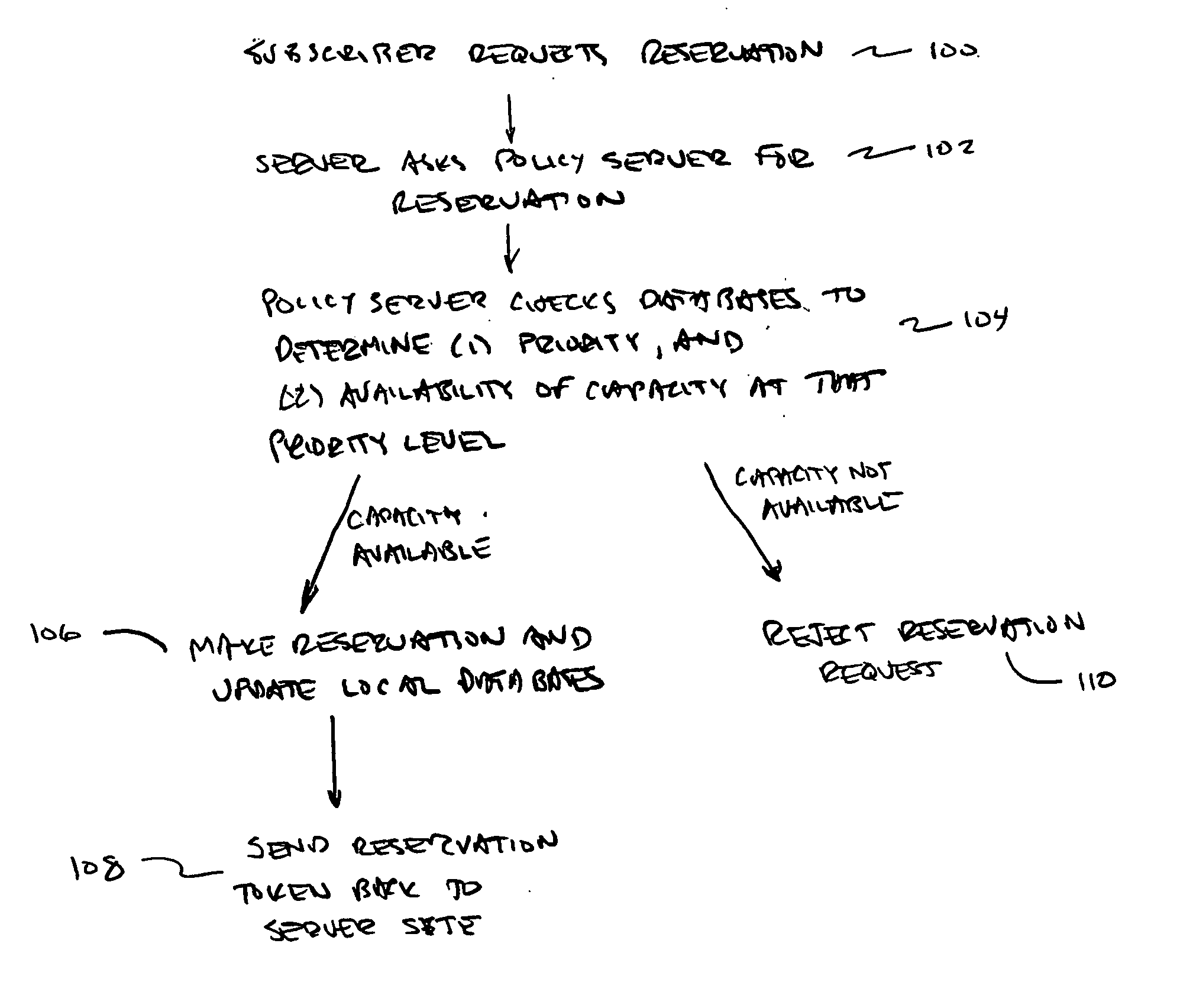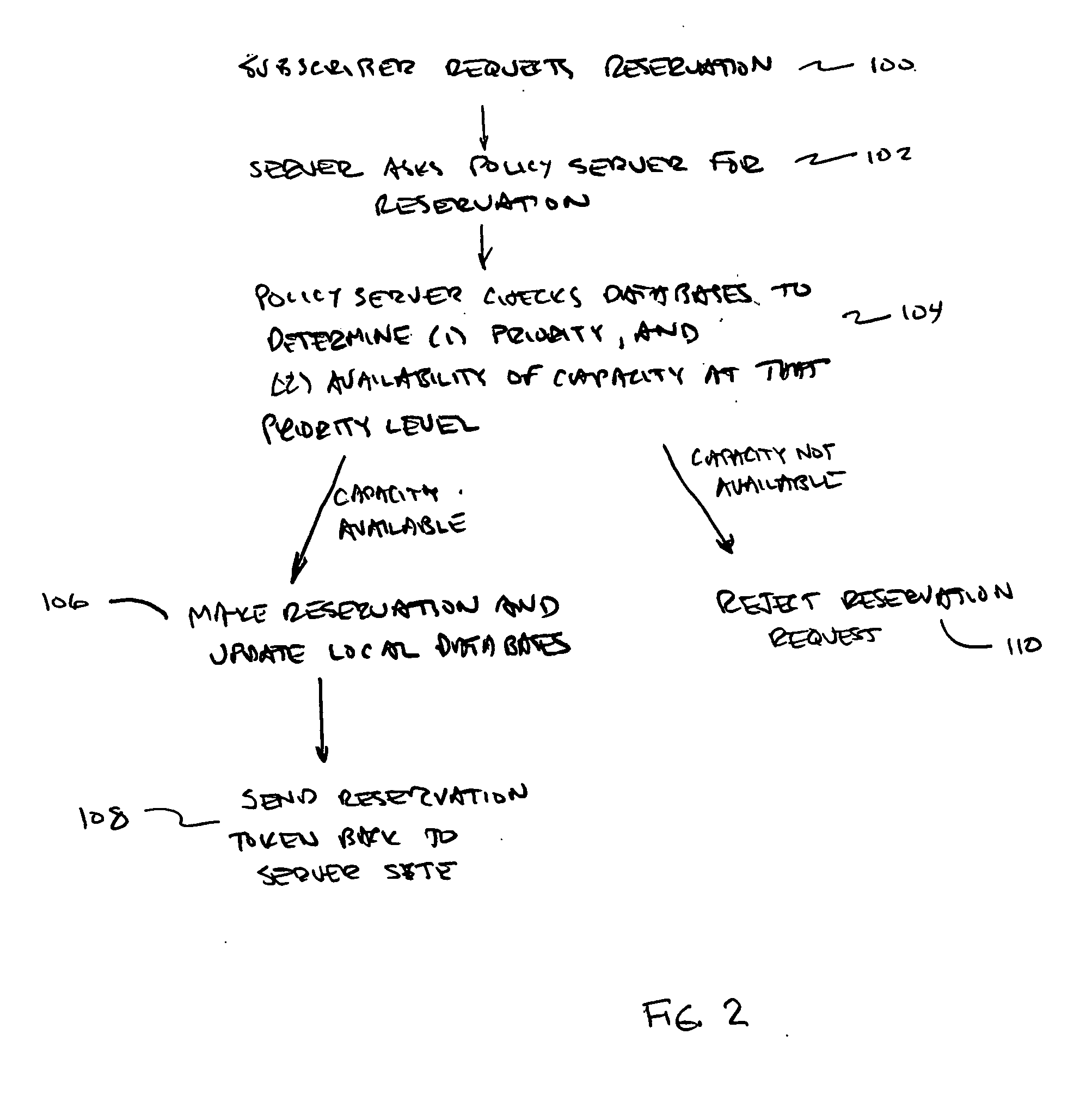Policy-based admission control and bandwidth reservation for future sessions
a policy-based admission control and bandwidth reservation technology, applied in the field of communication and networking, can solve the problems of affecting the quality of services associated with sessions, the inability of the service provider's network to grow linearly with the addition of new end users, and the limited resources consumed by a service (or an aggregate of services)
- Summary
- Abstract
- Description
- Claims
- Application Information
AI Technical Summary
Benefits of technology
Problems solved by technology
Method used
Image
Examples
Embodiment Construction
[0022]FIG. 1 is a high level diagram of a the architecture for delivering multimedia sessions over a DOCSIS-based HFC network with Quality of Service. It includes an application servers (AS) 12; multiple Cable Modem Termination Systems (CMTSs) 14, which function as gateways to one or more access networks 16; and a policy server (PS) 18, which manages admission control and Quality of Service on behalf of application server 12. These elements are typically connected to a network 20 (e.g. the Internet) over which they are able to communicate with each other. Customer Premises Equipment (CPE) 22, such as personal computers (PCs), game consoles, or set top boxes (STBs), are connected to the access networks 16 through Cable Modems (CM) 24.
[0023] In general, application server 12 requests application sessions with identified subscribers. These requests go to policy server 18, which evaluates them and either approves or denies them, depending on availability of network resources and polici...
PUM
 Login to View More
Login to View More Abstract
Description
Claims
Application Information
 Login to View More
Login to View More - R&D
- Intellectual Property
- Life Sciences
- Materials
- Tech Scout
- Unparalleled Data Quality
- Higher Quality Content
- 60% Fewer Hallucinations
Browse by: Latest US Patents, China's latest patents, Technical Efficacy Thesaurus, Application Domain, Technology Topic, Popular Technical Reports.
© 2025 PatSnap. All rights reserved.Legal|Privacy policy|Modern Slavery Act Transparency Statement|Sitemap|About US| Contact US: help@patsnap.com



